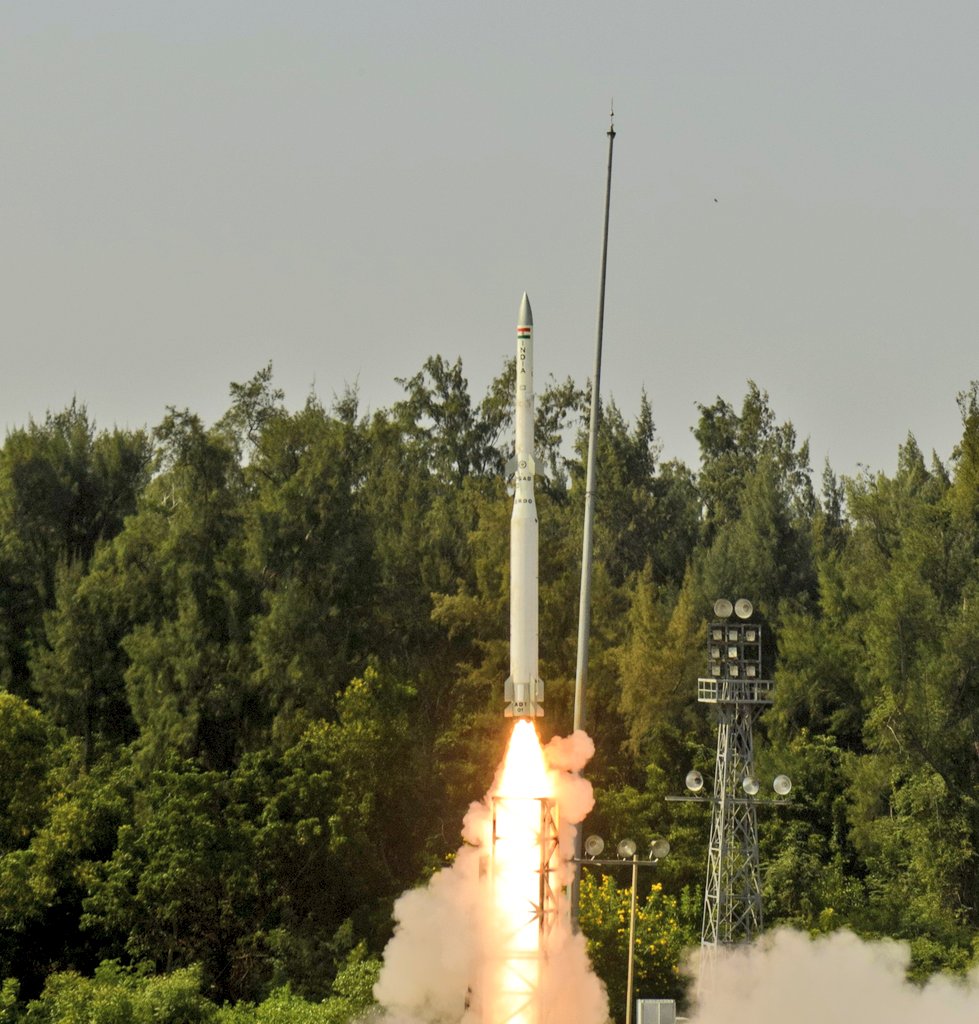
India has successfully tested the AD-1 interceptor that is similar to the THAAD of the United States
The test firing of a two-stage anti-missile system that can take down ballistic missiles even in outer space is a seminal event to protect the Indian mainland from a conventional and nuclear attack.
The Defence Research and Development Organisation (DRDO) fired the interceptor from the APJ Abdul Kalam Island in Odisha on Wednesday.
The DRDO statement named the interceptor as AD-1. It added that this was the first flight test of the Phase-2 Ballistic Missile Defence (BMD). The weapon had a “large kill altitude bracket,” implying that it could target ballistic missiles in space, and aircraft within atmospheric limits.
.@DRDO_India conducts successful maiden flight-test of Phase-II Ballistic Missile Defence interceptor off Odisha coast
Defence Minister @rajnathsingh
congratulated DRDO and other teams associated with the successful flight trial of AD-1#IndiaNarrative pic.twitter.com/MmaBNdBwmz— INDIA NARRATIVE (@india_narrative) November 3, 2022
DRDO chief Samir Kamat told ANI on Thursday that the Phase II BMD (Ballistic missile defence) AD-1 can intercept any projectile of the 5,000 km-class.
“If enemies target (us) from long range, we now have the capability to intercept. It is a significant jump in our capability against ballistic missiles,” he said.
“Once our radars pick it (the enemy missile) up, it (the AD-1) will be able to track it… our defence system can be activated and (the) missile can be intercepted. It is mainly endo-atmospheric but also works in low exo-atmospheric region. We’re developing for high exo-atmospheric region.”
By testing Phase-2 of the missile, India is on course to down Intermediate Range Ballistic Missiles (IRBM) which strike targets 3000-5000 kilometres away.
Clearly, Indian BMDs have taken into account IRBMs in China’s arsenal.
An earlier report published by the website Globalsecurity.org says that India is developing two new anti-ballistic missiles-AD 1 and AD2. The AD-1 can intercept less than 3000 kilometer range MRBMs with Pakistan while the AD-2 can intercept IRBMs that are part of the Chinese missile arsenal. Chinese IRBMs include the DF-26 or “Guam Killer” that has an estimated range of 4000 kilometres, and can attack Guam, a key US base in the Indo-Pacific.
The two Phase 2 interceptors will have hypersonic speeds of Mach 6 to 7, enabling swift interception.
The article points out that the Phase-2 interceptors are similar to the US THAAD anti-missile systems. In order to be effective, they need to backed by radars that have a sweep of 1500 kilometres. These interceptors are being developed to target Chinese IRBMs mounted with warheads deploying Multiple Independently-targetable Re-entry Vehicles (MIRVs) , which permit a single missile to deliver multiple nuclear warheads to different targets.
https://twitter.com/MIL_STD/status/1587772807684845569?s=20&t=fHOdMKVxMUbUPObj9XlKpQ
According to the report, Wednesday’s test was preceded by two trials in August and September 2018 that tested the capability to target within and outside the atmosphere. It has eventually led to the merger of the two technologies yielding Phase-2 of the trial.
Also view: India Successfully Launched Agni-4 Ballistic Missile | APJ Abdul Kalam Island


















